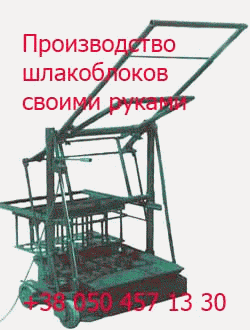Plastisols are pastes containing polymer (PVC) particles dispersed in a very high — boiling liquid (plasticizer), and low-molecular-weight heat-reactive substances. As with hot-melt adhesives, plastisols are heated in order that they are capable of wetting the adherents. The polymer takes up the plasticizer to generate a toughened polymer material that may range from tough and […]
Архивы рубрики ‘Adhesive Bonding’
Hot-Seal Adhesives
 3 сентября, 2015
3 сентября, 2015  Pokraskin
Pokraskin Hot-seal adhesives are dispersions or solutions based on polyvinylidene chloride, polyvinyl acetate and polyacrylates. When the water or solvent is allowed to evaporate, a coating is generated on the substrates (e. g. a printed board) that will seal under heat. Hot melts (generally based on EVA copolymers) can also be used as hot-seal adhesives, by […]
Thermoplastic Hot Melts
 3 сентября, 2015
3 сентября, 2015  Pokraskin
Pokraskin The primary polymers used to generate physically setting hot melts are polyamide resins, saturated polyesters, EVA copolymers, polyolefins, block copolymers (S-B-S or S-I-S) and polyimides [11]. For high-performance adhesives, polyamides, polyesters and polyimides are employed, whereas EVA copolymers and polyolefins are used for commodity and general-purpose hot-melt adhesives. The most important fields of application for […]
Hot Melts
 3 сентября, 2015
3 сентября, 2015  Pokraskin
Pokraskin Hot melts meet the criteria ofadhesion and inner strength in a unique way. They are applied from the melt that has intense contact to the surface to be bonded and thus allows adhesion to build up. After cooling, hot melts solidify and build up inner strength. Hot-melt adhesives can be categorized as: (i) physically setting […]
Properties and Fields of Application of Contact Adhesives
 3 сентября, 2015
3 сентября, 2015  Pokraskin
Pokraskin Contact adhesives are easy to process by casting, spraying, or using a doctor blade. When porous materials are joined, the adherents may be repositioned by briefly lifting them if the solvent has not yet fully evaporated. This property is utilized especially in the textile industry and saddlery, as well as in the manufacture of cars. […]
Contact Adhesives
 2 сентября, 2015
2 сентября, 2015  Pokraskin
Pokraskin 5.2.1 Composition of Contact Adhesives Typical base polymers of contact adhesives are polyvinyl acetates, chloroprene rubbers, polyethylene copolymers (with polar components), or poly (vinyl chloride) (PVC) derivatives. In general, the solvents used have different vapor pressures to prevent cobwebbing during the application process or skinning during the drying process. For the bonding of thermoplastics, for […]
Typical Formulation of Acrylate-Based PSAs
 2 сентября, 2015
2 сентября, 2015  Pokraskin
Pokraskin Acrylic adhesives are usually not tackified; rather, their pressure-sensitive character results from the inherent physical properties of the polymer. The primary monomers used for copolymerization are 2-ethylhexyl acrylate, iso-octyl acrylate and butyl acrylate (about 90% with regard to the dry adhesive). Polymers based on these monomers do not necessarily perform as well as PSAs on […]
Typical Formulation of Block Copolymer PSAs
 1 сентября, 2015
1 сентября, 2015  Pokraskin
Pokraskin Block copolymer-based PSAs are generally extrusion-processed or melt-processed without the use of any solvents. The molecular weight of these elastomers is considerably lower than that of natural rubber. The two primary block copolymers used for PSAs are A-B-A block copolymers made from polystyrene end blocks (molecular weight 10 000-50 000) and polyisoprene or polybutadiene middle […]
Typical Formulation of Natural Rubber-Based PSAs
 31 августа, 2015
31 августа, 2015  Pokraskin
Pokraskin In order to increase the ease ofdissolution, natural rubber is masticated by means of rollers or internal mixers prior to dissolution (in gasoline, toluene, hexane or heptane). Typical tackifiers used are resins based on rosin, terpene or hydrocarbon, which comprise approximately 40-50% of the dried product. Occasionally, oils are used as plasticizers (2-5%) to generate […]
Formulations of PSAs
 31 августа, 2015
31 августа, 2015  Pokraskin
Pokraskin The property first noted about PSAs is their tack. We know what tack feels like, but how do we describe it and, for that matter, how do we generate materials with tack? The addition of certain low-molecular-weight materials to elastomers in a process called ‘tackification’ generates tack, although due to their low molecular weight these […]
 Опубликовано в рубрике
Опубликовано в рубрике 
